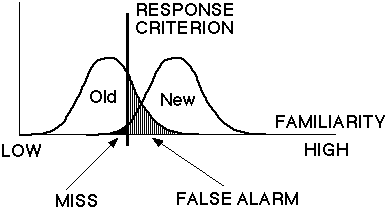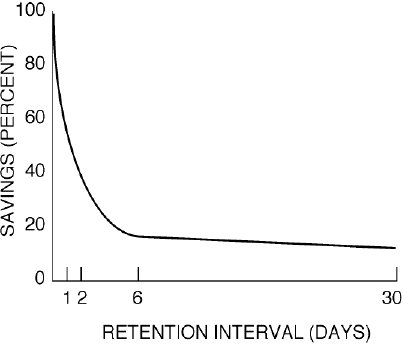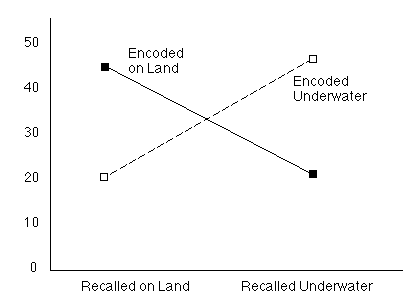
<<Back to Overhead Summary Page
<<Back to Cognition Class Home Page
---------------------------------------------------------------------------------------
SUMMARY
TYPES OF LONG-TERM MEMORY:
* SEMANTIC vs EPISODIC
* EXPLICIT vs IMPLICIT
* PRIMING
* RULE LEARNING
EXPERIMENTAL PARADIGMS:
* RECALL>
* CUED vs FREE RECALL
* RECOGNITION
EARLY RESEARCH IN MEMORY:
* EBBINGHAUS: RELEARNING TASK
* BARTLETT: RECONSTRUCTIVE MEMORY
MEMORY ENCODING STRATEGIES:
* REHEARSAL
* ORGANIZATION
* VISUAL IMAGERY
RETRIEVAL PROCESSES:
* RETRIEVAL CUES
* ENCODING SPECIFICITY
* DISTINTIVENESS OF CUES
FORGETTING:
* DECAY
* INTERFERENCE
* RETRIEVAL FAILURE
------------------------------------------------------------------
STAGES OF INFORMATION
PROCESSING IN MEMORY
ENCODING --> acquisition of information
STORAGE --> persistence of information
RETRIEVAL --> re-activation of memory traces
------------------------------------------------------------------
EXPERIMENTAL PARADIGMS
RECALL --> CUED RECALL --> FREE RECALLRECOGNITION

EARLY RESEARCH IN MEMORY
EBBINGHAUS
saving score =
time for original learning - time for second learning
-------------------------------------------------------
time for original learning

------------------------------------------------------------------
FREDERICK BARTLETT:
(Bransford & Johnson, 1972):
"The procedure is actually quite simple. First you arrange things into different groups. Of course, one pile may be sufficient depending on how much there is to do. If you have to go somewhere else due to lack of facilities that is the next step, otherwise you are pretty well set. It is important not to overdo things. That is, it is better to do too few things at once than too many. In the short run, this may not seem important, but complications can easily arise. A mistake can be expensive as well. At first the whole procedure will seem complicated. Soon, however, it will become just another facet of life. It is difficult to foresee any end to the necessity for this task in the immediate future, but then one never can tell. After the procedure is completed one arranges the materials into different groups again. Then they can be put into their appropriate places. Eventually, they will be used once more and the whole cycle will then have to be repeated. However, that is part of life."
------------------------------------------------------------------
MEMORY ENCODING STRATEGIES:
(1) REHEARSAL:
MAINTENANCE vs ELABORATIVE
(2) ORGANIZATION:
(BOUSFIELD, 1953)
(3) VISUAL IMAGERY:
PAIVIO (1971):
DUAL CODING HYPOTHESIS
------------------------------------------------------------------
RETRIEVAL CUE
(useful prompt or reminder for the information to be retrieved)
ENCODING SPECIFICITY

(Godden & Baddeley, 1975)
------------------------------------------------------------------
WHY DO WE FORGET?
DECAY:
Thorndike: Memory traces just fade away if
not used.
McGeoch: Time is not a sufficient explanation
of forgetting
INTERFERENCE:
Paired Associated Learning
--> Proactive and Retroactive interference
Slemecka: Interference does not affect real-life material
RETRIEVAL FAILURE:
Tulving: availability vs accessibility
Old memories are not erased, they are just non accessible, as a book in a library that has been displaced and cannot be found.
---------------------------------------------------------------------------------------